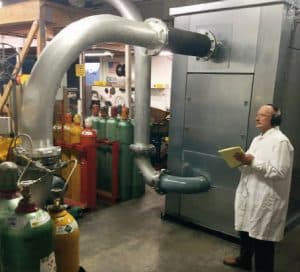Gary Russell of Sage Metering wrote “5 Factors Impacting Thermal Mass Flow Meter Accuracy, Flow Profile, and Conditioning,” which is now being featured on Flow Control Network.
Flow Conditioning and Profile Fundamentals
In this article, Russell reviews flow profile fundamentals, five end-user application considerations that impact thermal mass flow meter accuracy, and explores the use of flow conditioning to improve a flow meter’s accuracy.
Introduction
The velocity profile is used to determine the flow rate of a fluid flowing within a pipe. If the fully developed profile changes, a thermal mass flow meter’s accuracy decreases. Additionally, five application factors require consideration as they affect the meter’s accuracy; one of these includes the upstream straight run distance, which changes the flow profile. In many cases, flow conditioning, a process of synthetically creating a more uniform flow profile, is necessary when upstream straight run lengths are not available to achieve a sufficiently developed flow profile.

Read more on Flow Control Network.
Gary Russell
Gary Russell is the Vice President of Engineering and Operations of Sage Metering. Russell has a Masters in Mechanical Engineering and over 25 years’ experience in thermal mass flow meter design and project management, including improving calibration systems, developing flow conditioning strategies, implementing gas correlations, and design improvements.
Image by anncapictures from Pixabay

